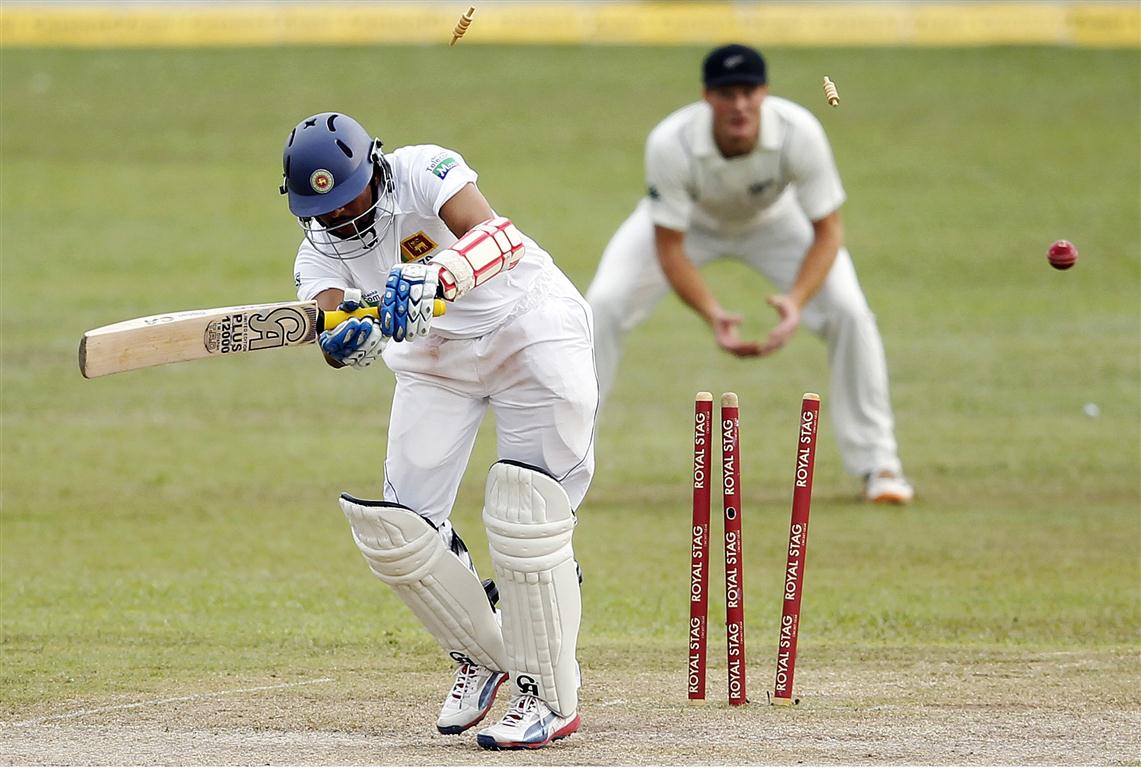In what is very much a follow up to my previous blog, are we experiencing a revolution in Test cricket? With the announced two-tier Test system and with day-night Tests being announced (it looks like we’ll see one in Kolkata soon enough), it looks like the ICC are finally moving into the 21st century. In this post, I want to take a quick look at the ‘other issues’ which exist in modern Test cricket, including pitches, the toss, DRS, tour preparations and the length of Test matches.
Just to make one thing clear from the outset, do I think Test matches should be shortened to 5 days? No, simply no. The modern 5 day structure encourages results. While it does mean that teams can gradually tick along at less than 3 runs per over for more than 100 overs, is that really a problem? After-all, this is Test cricket. Sure lots of matches finish up in 4, but the last thing we want to see are more draws. This will become even more interesting with the prospect of the two-tier almost league system; teams will be motivated to push for results. The more difficult it is to draw a game, the better.
While some liberty exists in producing pitches, whether they be fast tracks that we experience in Australia (particularly the WACA) or those which produce a bit of uneven bounce and favour the swing bowlers in England, some form of pitch standardisation is needed. Across the world it will be very difficult for pitches to all be identical, but that isn’t what we want to see. While I love seeing Test matches finish up inside 4 or even 4 and a half days, this should be as a result of one team out-performing the other, and it shouldn’t be because the groundsman has simply defeated the (often) visiting team. The clearest example of this problem was seen last year when South Africa visited India and were absolutely pummelled. They weren’t defeated by the Indian team as much as they were by the groundsmen. The pitches were awful, offering up near unreadable spin from the first ball. Of course, both teams had to deal with the same problems, and while the South African’s knew that spin would play a big part in the tour, none expected each pitch to be a birthday present to Ravi Ashwin. Simple not good enough. On the flip-side, no one wants to see a flat track that provides nothing for the bowlers. Again, I love seeing big scores being posted. Jonny Bairstow’s rich vein of form has been a treat to watch lately, but he has earned though runs, rather than being gifted road pitches to play on. The onus is on the ICC to encourage some sort of balance. Teams will still have some liberty to tailor the pitches to their own liking, but not to the level that was seen last year in Nagpur. The easier way to prevent this is to impose fines, or even points deductions whereby such pitches are produced.

Probably one of the more ‘controversial ones’ – largely because we love a bit of a gamble. Cricket is a game of skill, but there is often an element of luck. The luckiest man is the one who calls the toss correctly. But what if we eliminate the toss? This is something which has been trialled in the English domestic game. Take away the toss, and let the away team decide whether they want to bat or bowl first. This is probably one of the best ways to also incentivise better 5-day pitches. If the away captain wakes up to a lovely cloudy morning, then they bowl. Sunny skies and a chance for big runs? Well bat of course. By allowing such an option, it would provide a better template for an even contest. The home team will still undoubtedly be able to read the conditions better, but the gulf between the teams would be seriously reduced. Something which has more so been proposed for the shorter format, it’s unlikely to see such a change in the near future of Test cricket. It’s certainly one which is worth a few words though.
Three words which are very unpopular with the BCCI – Decision Review System. DRS is great, but it isn’t perfect. The ICC need to invest, and invest seriously. Currently tests are being carried out in MIT to effectively shore up the currently system. Get some top class DRS technology and make it mandatory for all series. Not just that, but if DRS is going to be used, it has to be the same across every series – hotspot, snicko and ball-tracking. One thing which popped up yesterday during England’s first innings saw Jonny Bairstow being reprieved because only 49.9% (so Michael Holding tells us) of the ball was going on to hit the stumps. ESPNCricinfo reported last night that the ICC were looking to review this and reduce the burden to 25% – good, great even. Too often the game is tipped in favour of the batsman. If the ball is going to cartwheel the stumps, the batsman should be walking back to the dressing room. Kumar Sangakarra made his views pretty plainly – ‘high time the ICC got rid of this umpires call. If the ball is hitting the stumps it should be out on review regardless of umps decision.’ In reality, there around about 20 other things with DRS which could be talked about, but it’s probably best if we leave it there!
‘That’ Jonny Bairstow decision – source: http://www.ozaccess.com/sports/cricket.html
The last thing which has become clear over the last number of months is the need for better warm up matches. This was a complaint of the Sri Lankan team leading up to the on-going series against England. A possible solution would be to have two or three matches prior to the beginning of a series against an ‘A’ team. England’s current ‘A’ team or the England Lions as they are known have a very good pool of players who aren’t too far off an England call up. This would allow players who are on the fringe of the Test team to show their worth against a Test nation, while ensuring that the visiting team is given the best chance to familiarise themselves with the conditions against quality opposition. There needs to be a way to ensure that visiting teams face quality opposition and not simply a ‘second XI’ of one of the domestic teams.
While I don’t see the ICC or even the collective boards waking up tomorrow and making these wholesale changes, I do think they are discussion points which are becoming more and more important to move the international game into the 21st century. It’s all about balance – trying to keep things fair between bat and ball, the home team and the visiting team. Hopefully this will see more and better contested cricket in the future.
Thanks for reading!


